By October 1, 2015, homelessness in Modesto and Stanislaus County had become the region’s most urgent social and political issue. That’s when Stanislaus County Supervisors hosted their “Focus on Prevention” symposium to announce, “a ten-year journey of Stanislaus County toward community transformation and prosperity. A primary focus….is to reduce homelessness.”
At the time, a few observers noted that “prevention” wasn’t possible for the hundreds of people already in the region with nowhere to go. The time for prevention had passed. Modesto alone had over 1,000 people without homes.
Almost six years later, there are more homeless people in Stanislaus County than ever. But Modesto and Stanislaus County aren’t alone in experiencing rising homelessness. All along the west coast and as far away as Washington D.C., numbers of chronically homeless people continue to rise, despite the best efforts of local governments and volunteer groups to reduce them.
There are numerous and well understood forces driving homelessness, including job loss from the effects of Covid 19, diminished social and mental health services, housing shortages, rising living costs and stagnant wages. Much less understood are reasons why state and federal governments have been so helpless to stem the rising numbers.
Hasty Generalizations
One obstacle to addressing homelessness is the widespread tendency to lump homeless people into one or two broad categories, a dual error of broad generalization and oversimplification. In these scenarios, homeless people are “bums” or “addicts” who “choose” homelessness as a way of avoiding work and responsibility.
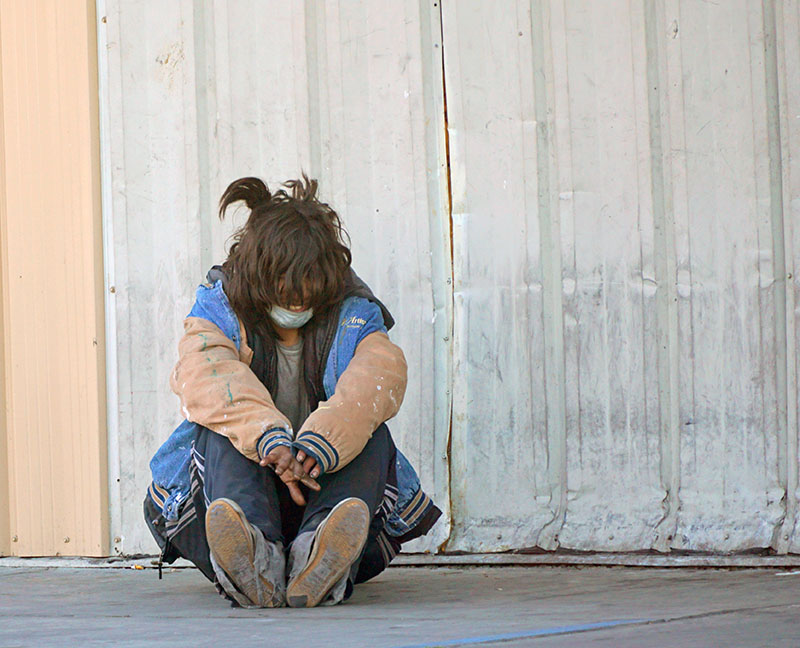
Supporters of the “bums and addicts” theories favor “tough love” remedies for homelessness, with the emphasis on “tough.” Typical tough tactics include fines and jail time. The consistent action is a chase — an unending series of fruitless sweeps that push homeless people back and forth around town.
In some cases, the alleged bum or addict is placed in a locked down rehabilitation facility. The belief is that if the bums and addicts have it tough enough, they will shape up and get a job.
Supporters of the “bums and addicts” theories never address the most elementary realities of homelessness, especially the end results of jail and rehabilitation. No matter how “tough” jail and rehabilitation are, the vast majority of people who enter them homeless exit them homeless. That’s because the cause of their homelessness isn’t drugs or indolence, it’s extreme poverty. Tough love approaches turn out to be circular routines back into homelessness.
It takes only a moment’s reflection to realize that most drug users and addicts aren’t homeless. If addiction caused homelessness, celebrity addicts like Rush Limbaugh, Prince, and Robert Downey Jr. would have ended up on the streets.
Soccer legend Diego Maradona had a cocaine habit throughout most of his career. His gifts as an athlete brought him sympathy and compassion instead of the condemnation poor people experience from their drug use.
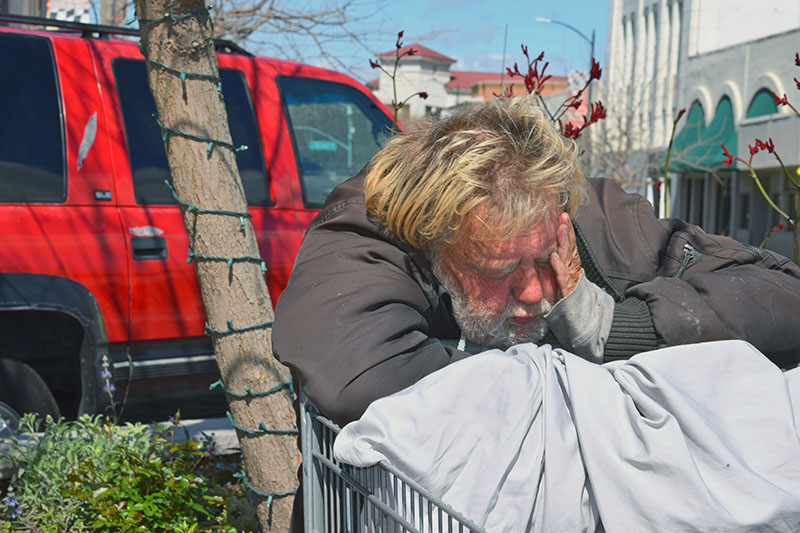
In 2019, “an estimated 10.1 million people aged 12 or older misused opioids. Specifically, 9.7 million people misused prescription pain relievers and 745,000 people used heroin.” The numbers of people who “misused” opioids don’t include those who (mis)used methamphetamine, cocaine, alcohol, Adderall and other drugs, nor do they include the millions whose drug use goes unrecorded. If drugs were the cause of homelessness, we’d have millions more homeless people.
The “bums” narrative, along with claims that people “choose” homelessness, are as specious as those that cite drug use as the causal factor. Yes, the homeless population, like any group of significant numbers, contains a proportion of “bums,” people who seek to coast along on the efforts of others. Such people, however, don’t choose homelessness. They’re homeless because they have no other viable options.
Work of any kind must offer an incentive. In the case of homeless people, the most pressing incentive is a place to live. Close behind is a sense of worth and accomplishment. Today, especially on the west coast, but also in cities like New York and Washington D.C., only a tiny few homeless people have a chance at a job that pays a living wage.
Even in Modesto and Stanislaus County, which serve as bedroom communities for Bay Area wage earners fleeing high rents, housing for the poor and homeless is far out of reach.
Recent studies show that renters in Stanislaus County need to earn $4,813 a month to afford an average monthly rental expense of $1,255. Most of the county’s economy depends on retail and agricultural workers who earn far less. Except for those who receive disability or Social Security income, homeless people earn nothing and their prospects for finding a job that pays enough for a rental, even if one were available, are virtually non-existent.
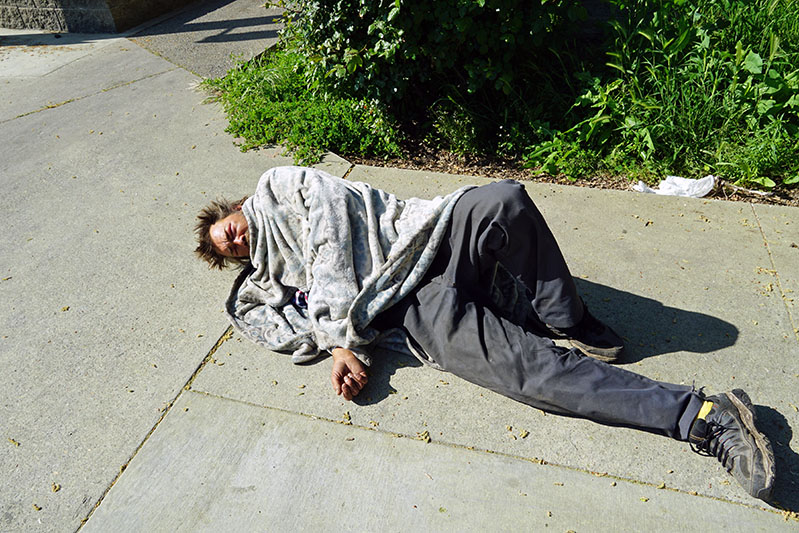
Moreover, Stanislaus County has 15,485 low-income residents who can’t find an affordable home; another 76% of its low-income residents spend over half their salaries on rent, a recipe for imminent disaster; they’re a hospital bill or car repair away from the streets.
When hard work doesn’t pay the rent, the value of work declines. Wage earners who can’t afford a place to live find fewer and fewer reasons to labor.
Obsolete Narratives
Despite mathematical facts about housing and wages in Modesto and Stanislaus County, many residents still favor an obsolete narrative about homelessness. According to a widely held view, the remedy for homeless people is to move off the streets and into a shelter where they will be, “connected to services,” that put them back into the mainstream with a job and a place to live.
In fact, local services for the homeless, especially those for the mentally ill, are far too understaffed and underfunded to address the needs of even the seriously mentally ill (SMI), let alone people with less severe but still significant mental and physical health problems.
Consider the case of Mary Baca. Just under six years ago, Mary showed up in a Modesto park after living for several months in her car. It was immediately apparent to homeless people in the park that she was severely mentally ill. Over time, her mental illness got worse.
Approached numerous times by outreach workers, Mary has always refused help, almost certainly because she’s afflicted by anosognosia, a common condition among the mentally ill that makes them unaware of their illness. She once had a 15-day stint in Stanislaus County’s Behavioral Health Recovery Service Center, where she received counseling and prescription medication, whereupon she was released and returned to her favored park location.
Back in the park, Mary’s friends noticed a marked improvement in her mental health. However, she went off her medication after a few weeks and returned to her state of paranoid schizophrenia. Mary can be seen singing and playing guitar on a video taped by Richard Anderson in May, 2016. At 28 seconds in, Mary talks about life in Modesto’s Graceada Park, and the seven underground homeless men responsible for home invasions in the Graceada neighborhood. Her illness is obvious.
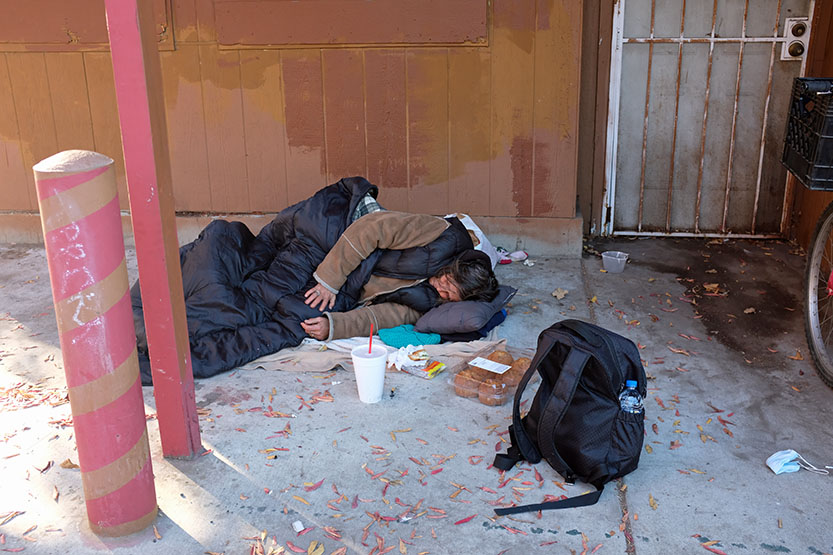
Today, Mary is in the Stanislaus County Jail. She’s been there since February of this year, when she was arrested for refusing to leave the premises of a local market where she panhandled during the day and slept at night. After over six months, her next hearing is scheduled for December. Even after all this time, the only “service” available for Mary is incarceration, despite clear evidence of SMI.
Kenneth “Pops” Yarber is a disabled man who spent over 20 years on the streets of Modesto until the opening of the Modesto Outdoor Emergency Shelter (MOES) in 2019, when Modesto Police Sargent Mike Hammond told him he needed to get inside or face arrest. MOES was a permitted campsite featuring onsite security and services.
When MOES closed in January, 2020, Pops moved into Stanislaus County’s low barrier shelter in the Berberian Building on 9th and D Streets in Modesto. Except for a short stint when he was kicked out for a dispute with a staff worker, Pops has been there ever since, almost 20 months. Somehow, he’s still not connected to “services.” During the time he was suspended, a period of triple-digit temperatures, Pops lived in a nearby park.
Though clearly erroneous and counterproductive, “shelter to services” is still the dominant narrative for homelessness, and a major reason why the numbers of homeless people continue to rise.
Parasites of the Mind and Perversions of Language
Homeless people are commonly classified as “vagrants” or “transients.” The effect of such words — like the effect of words like “addicts” and “bums” — is to objectify and dehumanize them, to make them something other than people.
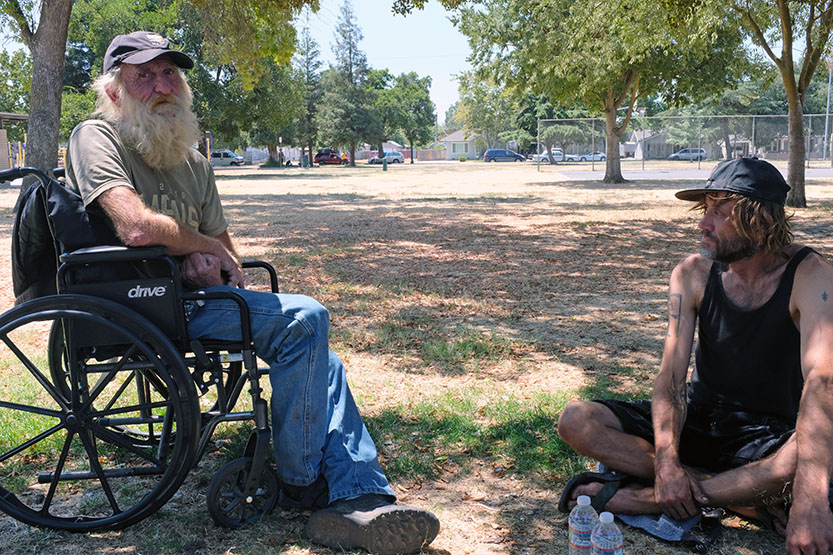
One of the most enduring myths about the homeless in Modesto and Stanislaus County is that they’ve been shipped in from other cities — they’re not our own. Despite evidence that the overwhelming number of homeless people in the region have local roots, the “other cities” origin narrative persists because it assists in a process of alienation; it marginalizes homeless people as outsiders and makes it easier to deem them unworthy of help.
Help itself is routinely discouraged by memes about “enabling” and bromides about “teaching a man to fish” or giving him “a hand up instead of a handout.” Instead of its positive connotation, “enabling” becomes a negative because it’s associated with encouraging bad habits.
In fact, we should be enabling more people with disabilities, not fewer. We should be feeding the hungry and comforting the afflicted. Perversions of language make it harder to think clearly about the realities of homelessness.
In a nation where wealth is seen as a sign of virtue, it follows that poverty must be a sign of vice. So it is that homeless people must “choose” homelessness and “don’t want help.”
It is true that after many attempts to make a living at poverty-level wages and after several rounds of failed “services,” many homeless people become exhausted and burnt out. They’ve discovered “help” is illusory and too often leads back to the streets. They’re also often damaged by the stress of extreme poverty.
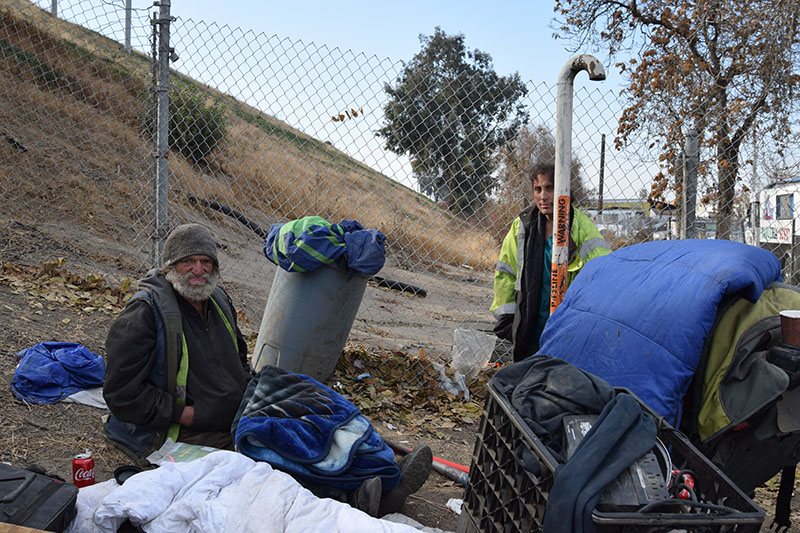
Robert Sapolsky, Stanford’s MacArthur-Award winning brain neurologist, has found that the stress of poverty leads to brain damage. The damage increases in social contexts featuring great wealth disparity.
While the damaging effects of poverty on children are well known, it’s only recently that research by scientists like Sapolsky has revealed the damage to adults from extreme poverty. Chief among the effects of the prolonged stress of poverty is damage to the brain’s executive function — the part of the brain involved in making choices. The popular view — that poverty is caused by bad choices — confuses cause and effect. In fact, according to research by Sapolsky and others, the bad choices are an effect of poverty, not a cause.
One of the ways homeless people cope with the stress of extreme poverty is by forming small communities, groups they often refer to as “families.” Loosely associated with a local park, neighborhood, or along a river, homeless families provide their members with security from the bullies, thieves and belligerent young people who often prey on them. They also share food and other necessities.
When Stanislaus County disbanded MOES, the most common complaint among the homeless was the loss of community.
“We’ve got each other’s backs,” was a common refrain from people displaced when the permitted campsite closed. “Now we’re losing our community.”
A number of MOES’ residents, like Pops Yarber, moved into the county’s low-barrier shelter, but with a capacity of 180 beds it left many of the over 450 MOES’ campers with nowhere to go.
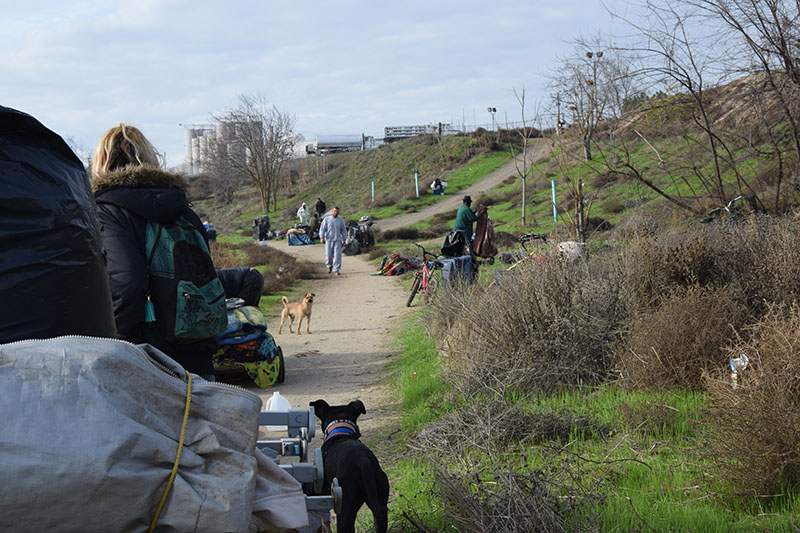
Not long thereafter, the county instituted an “accountability” element as part of its homeless abatement program. A key feature made any encampment or gathering of more than ten homeless people subject to citations or arrest. Once again, homeless policy in Stanislaus County had devolved to chasing poor people from place to place. The County’s “Focus on Prevention” program had come full circle, with the major difference there were now more homeless people than ever.
The Covid pandemic only made things worse. Covid relief money took some homeless people off the streets only because they used the money to buy cars and vans. Some of these buyers had been living in shelters. Two residences for homeless people in the City of Patterson became vacant altogether after residents received Covid checks and took off.
The rising numbers of homeless people living in vehicles included many who had lost housing after failing to pay rent or mortgages. Despite moratoriums, renters were still being evicted. Stanislaus County’s eviction rate led the entire state, with 18 evictions per 10,000 households. Mendocino, Kern, and Calaveras Counties tied for second place with 14.
Covid also made congregate living even less appealing than before the pandemic. Many homeless people avoided shelters anyway because colds and flu were prevalent there, especially during winter months. Covid added another disincentive.
In any case, shelters were never meant for long-term residence. They served best during a time when men — and the vast majority were men — who had fallen on hard times or struggled with alcohol or drugs could spend a week or two getting cleaned up before finding a job and moving on.
Those were also the days of cheap hotel rooms and boarding houses; rents were far lower. A worker could earn enough in a couple of weeks to move on from the shelter into a room or apartment. Those days are gone.
Today, shelter occupants seldom have viable options for relocation. Many are disabled and many more will never find a job that pays a living wage. Modesto and Stanislaus County have an acute housing shortage, but funding for construction is dependent on meeting federal and state standards for “affordable” and “permanent” housing. Nothing is affordable for people with no money and no prospect of getting any, and many people’s Social Security or disability incomes fall far short of qualifying for market rentals.
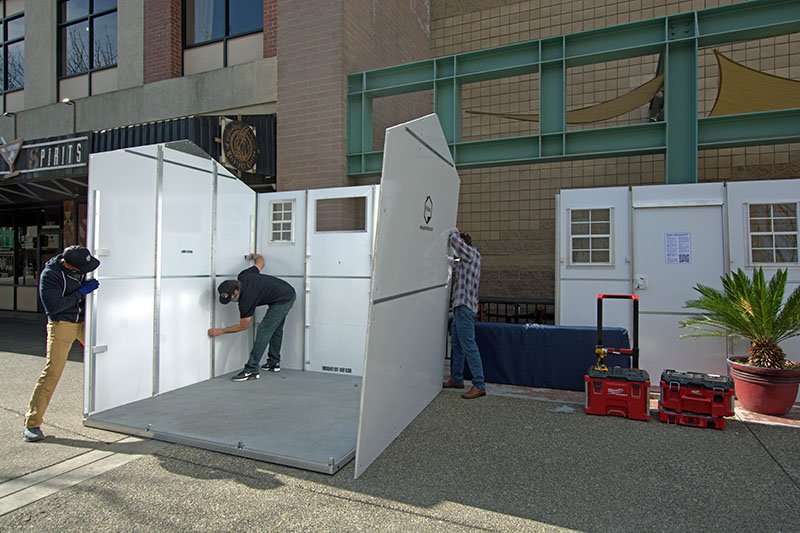
These realities — housing shortages and restrictive laws and regulations — too often delay or prevent the quick action needed to reduce the harmful effects of homelessness. Ironically, Modesto and Stanislaus County had an ideal strategy for reducing the ongoing harm of homelessness with MOES. At an estimated cost of $13 per day per person, MOES provided the most cost-effective harm reduction strategy for homelessness anywhere.
Even as Modesto and Stanislaus County veered away from permitted camping, cities like Sacramento have embraced it. The Sacramento City Council unanimously approved its “Safe Ground” strategy for reducing homelessness on August 10. It includes permitted camping, tiny homes, and round-the-clock service and security.
While Modesto and Stanislaus County double down on congregate living options — following the “shelter to services” narrative — other regions have moved to quicker and less costly options. Among the most efficient are Pallet Shelters and Conestoga Huts.
Pallet Shelters are sturdy, lockable, and can be set up in hours. Fresno, Santa Clara, Los Angeles, Sonoma and dozens of other locations have established sanctioned Pallet Villages already, with more coming. Rather than wait for years for so-called “affordable housing,” these communities have recognized the urgent need for shelter now.
After decades of deferred maintenance, there won’t be a quick and easy fix for our roads, bridges, canals, dams, ports and other crumbling infrastructure, nor will there be an easy fix for the punishing effects of extreme poverty. Every day homeless people spend without a secure place to lay their heads causes more harm, both physical and psychological.
Homelessness also causes loss of revenue to local businesses; it depreciates property values, and contributes to rising numbers of quality of life crimes. Local governments everywhere have been unable to reduce the harms of homelessness in large part because their leaders have been incapacitated by obsolete narratives, obstructive regulations, mindless memes and perversions of language. The effect is to blunt and even destroy political will.
Ending “welfare as we know it” and reducing government “to the size where [we] can drag it into the bathroom and drown it in the bathtub” sounded like good ideas at the time. Today, while billionaire oligarchs cavort in space, disabled Americans sleep on our sidewalks. Local governments are helpless. The quality of mercy isn’t strained, it’s shattered.

Excellent article with emphasis on how the issue of homelessness is shaped not so much by the extremely poor but by the narratives created for them by the wealthy and their political representatives. One would think that in a county with slogans like, “Love thy community”, “Great Neighborhoods”, and “There Are No Others” that there would be minimal homelessness and for those that became homeless it would be short lived! Apparently the overarching drive to hold onto power shapes the local narrative too and leaves the great sounding slogans hollow.
This article sheds light not only on false narratives but also on the cracks in our underfunded and understaffed homeless systems of care. What local funding that is available for homeless services typically comes from the federal and/or state government and is never enough and the usage rules are so onerous that’s it’s a wonder that it can be spent at all.
Housing of course is a major problem with many factors beyond our local control, or so many think. I believe it’s become too easy to blame the state on our local problems. It’s way past time to think out of the box and lead the way in providing adequate shelter for our underserved neighbors.
Again, changing the narrative is very important for housing also. So let’s move away from affordable housing, to tiered or bridge housing in new communities! Here you’ll find the first tier of transitional is inexpensive [$10,000 or less for 100 sf] and the second tier of permanent is $50,000 or less for 400 sf. Each community would have no more than 100 or so units and have services just like any community.
Hopefully this article will set the stage for further discussions that lead to a county where the slogans ring true as demonstrated by all the vibrant communities.
I am mulling Eric’s and Frank’s streams of consciousness over in my own. Ruminating, like chewing on the cud. Numerous flashes of reality pierced through my heart.
How do decision makers tally some haphazard list of figures to come up with a ten year deadline, truly seldom met, to care for the houseless. Do they stop to feel for the human beings that wait out those years while gradually, some more quickly, dying on their own streets. Yes, their own streets, not some NIMBYS’ only streets, not some PROPERTY DEFENDERS’ only streets. Their streets…
It is way past time that valley citizens stop coddling those selfish people who think it higher priority to have the city spend, literally, millions of dollars fixing some sidewalk, rather than place, as first priority, the living, breathing, flesh and blood individuals who need permanent housing of their own. Some of us pride ourselves placing demands that housing must be at least over a certain sq. footage. Ask any houseless, or soon to be houseless, individuals, if they need a large dwelling to live in.
They have learned to downsize, as the rest of us ought.
The Commission recently advised that we bring the R3 down to a max of 14 dwellings, rather than 22, to match the R2 max. I say, “Commission comission”. How dare they decide for us, while a panel of City Council members ask little or absolutely no questions prior to voting such hideous changes. People need space to live and like it or not that space will be side by side and on top of one another.
If the City Council and valley citizens do their due diligence research, they will know that smart cities are designing for the future, by including cost efficient dynamics many of which are akin to the way people used to reside. Passive solar housing, etcetera.
People willing to face reality know we cannot keep up the current paces.
Meanwhile, I will vote to forego a few sidewalks and alot more, inorder, to house every human being and provide necessary services as needed.
How dare any one put themselves above any other beings???
We need to stop dreaming, this American dream, that probably never really existed. Somebody has to pay for all this frivolous spending. If we cannot spend, first, on human beings then we should not be allowed to create frivolous rules about where they lay their heads when exhausted.
We, here, in this community treat our own citizens worse than other countries treat their poor. At least, their poor are allowed to live together in shanty towns or villages like ghettos. We, can’t stand to see the poor live enmasse. We cannot stand leaving them be. We send in the police to bulldoze over and haul away their personal belongings. We can’t stand letting them get too comfortable watching out for one another. It just does’t seem right to the average citizen, does it. Get over yourselves.
I have news for each and every rural city and town, things are not likely to get much better, more likely to get alot worse. City founders, whomever they were, did not plan for prices to rise sky high, due to greed and such. All the housing and industrial developments included streets, but, who factored in the cost to maintain or repair? They did not think about their city’s fiscal capacity one day being audited and flagged as a high risk entity. Yet those people who call all the shots still dream on.
Still plan to demand more high cost expenditures while demanding taxes not be raised, at least not on their income and property, yet okay on someone elses. We commit sins of comission and sins of omission…
Is any state in the nation free of a homeless population? How about, is any country free from homelessness? If the answer is yes, what is that state or country doing right?
My perception of government throwing money at the problem is that a large percentage gets siphoned off to enrich a few. If the number of homeless is not declining, then the existing Programs are not cost effective.
The issue is not sacrificing sidewalks for the homeless. Finding what works is a better idea.
I agree with your perception of government everywhere, is throwing money into enriching the few. The existing Programs are anything but cost or time effective.
People have been finding out what may work for decades. All, most, come up with are duds. The homeless PEOPLE are in a time crunch, they do NOT have the time it takes to find these, thus far, elusive Programs, that are so efficient that the homeless PEOPLE suddenly go poof. That is how the average resident likes their homeless PEOPLE: invisible. Simply NOT happening timely enough.
Just saying, what is true from most housed perspectives.
We are SACRIFICING PEOPLE so we are not “sacrificing sidewalks”… I used the topic of sidewalks whereas a couple of $M was recently spent toward such. And if we took a tally of each and every Modesto inhabitant who actually use the sidewalks recently voted to be repaired, odds are slim the number of users necessitated such urgency, compared and contrasted to the urgent of housing PEOPLE FIRST.
Something has to go, or be set aside for the time being. Plain and simple logic.
Do not get me wrong, I enjoy sidewalks, but not at the expense of a single PERSON let alone a couple of thousand PEOPLE, and growing, after the Moratorium expires. Let us check our cognitive dissonance. Either we want PEOPLE housed, or we want our own creature habits FIRST and foremost.
Do the math, then. Very interested to hear a QUICK solution, cuz that is urgent.
Thank you for the very thought-provoking and informative article. Can anyone tell me why MOES was disbanded and, in light of the increasing need to house people, why it is not put back in place and expanded to other locations?
The official reason: The city and county had only secured use of the space for one year from Tuolumne River Regional Trust. It was seen as a reasonable time period because the new 182 bed low barrier shelter was projected to be open within a year and people could move to it.
The math was kind of fuzzy though: when you only have room for 182 people and there are 400 or so to move, where or where do the 200+ go?
The unofficial reason: There was no political will to do another ‘tent city’ and there still might not be.
Bruce you raise some interesting points. If the solution was as simple as a measure of cost effectiveness then we’d be dealing with widgets not people and their issues.
A fundamental issue of homelessness is that it lays bare how horrible our care for the least of us really is. On the positive side of the issue we end not only trying to make people invisible again but fix them up too, so they can be self sufficient and not a drag on society. It’s the ‘fixing up’ that doesn’t lend itself to cost effective measures; e.g. how much does it cost to to ‘fix’ a mental illness? We don’t really know but we do know, unless you have your own means, Medi-cal isn’t going to spend much on it!! What about drug rehab? Same formula, ‘not much’, and housing, not much, and on and on, not much.
To me, the question becomes as illustrated by Pearl Buck (1892-1973): “Our society must make it right and possible for old people not to fear the young or be deserted by them, for the test of a civilization is the way that it cares for its helpless members.”
There is some reflection needed I think on fixing stuff vs. people.
say unhoused…. most of them are from here , modesto is their home , all the vets came home, but could not get or stay housed…. they are “unhoused veterans”
and many never owned a home , so to them, they are home and JUST UNHOUSED
and with 80% of the housing stock under corporate property management
the price is manipulated to keep empties off the market and the price high on the few
units that are up for rent/sale.
Thank you, Jane
Say unhoused, most are home, because from here. And if not originally from here, they are home now and just unhoused.
80% under corporate controlled property management, that is something to think long and deeply about…
All the more reason to have land donated. Someone out there has land and heart enough to let those unhoused remain on land not pulled out from under them.
Who to donate to is the question at hand. It has to be donated to out of the box thinkers who are not willing to get bogged down by unnecessary red tape.
The city or county has to then keep their hands off as much as humanly possible.
Now there is something to hope and pray for.
There are unhoused populations who manage and operate their own community.
Love that idea, love your reply, love the unhoused whose home this is…
It’s truth about us as homeless it’s tough already without discrimination; I thought people of color had it bad. Being homeless is viewed in the same aspect and the word is discrimination. Regardless of color, a homeless community is what it is and we need to be as transparent about policing and racial discrimination as anywhere; it needs to be addressed in the same form or one day will have no choice but be open to the world of bad treatment.
We are true Americans who just got a bad hand of cards that we were dealt, and if a chance was equally given to be a community we would need the equal things and treatment that makes a community thrive; we should not be pushed around or jailed cause of homelessness, that is discrimination against the whole homeless community. We are treated like people of color back in the 1800’s by police they will come with such a force to intimidate because who’s going to complain or who these people going to learn their rights from if they’re drug addicts and not considering that we are all Americans from someone’s mother or father etc.
Speak more truth to us, Demetrius. I hear where you are coming from in your heart. Love what you offer. Voice your mind.
Let us keep hearing from you. Let yourself flow…
We need you to tell us like it is. Tell us how it could be. Share your vision…
Til we meet this way again, may God bless you over and over and over again…
These are the people who would be well served with micro shelter enclaves that have oversight.
Great article. I thought about this long and hard one day. We need homeless tent encampments with showers, restrooms, and large assigned lockers. We need an enclosed facility for sober tenants. A central campfire section could allow for socialization and community. It could be run by homeless volunteers. Any altercation or theft or drunkenness would result in final warnings and then eviction from the community. This could help identify the mentally ill and provide a secure dwelling for tenants. Perhaps a $50. Monthly fee is administered for water/shower and locker. This could support those looking for a job to have regular showers and clothing changes free from theft in hopes to get back on their feet. Encampments would be limited perhaps 6mos to a year to allow people to save up for rent and get re established. The sense of community and friendships they build here would be the most beneficial for their mental health. And this could be incentive for those with addictions to get clean and join the homeward bound community.
If the city could fund portable homes like in Santa Clara County, even better. But if they just help with showers and lockers, and maybe-monthly haircuts I can see good coming out of this. The saddest part about being homeless is being overlooked as nonexistent. This program could help with RE-humanization efforts empowering our homeless and giving them back some dignity and worth. ❤️
Angelique, thank you and bless you…
You expressed formation of a vision that could work, with a bit more fine tuning, better than expecting the unhoused citizens to come together on their own. I am sure many unhoused citizens wonder how they can locate other unhoused citizens who are like minded.
Unfortunately, generally, unhoused citizens are all jambed together in one (1) BIG category called HOMELESS. Truth is I think we must speak up for the voiceless: each and every unhoused citizen has a particular reason or reasons for what needs they need to have met.
If we are going to categorize anything, lets separate them into groups that are realistic. Following are suggestions, only. Certainly not written in stone.
1. Who is working and has money to cover costs if funds are pooled together?
2. Who is able bodied but not working.
3. Who has some means of income to pool together.
4. Who are disabled. What needs need meeting?
5. Who are elderly. What needs need meeting?
6. Who has addictions,. Which needs, besides oversight are necessary?
7. Who has a dual diagnosis: addicted and suffering a mental illness? Needs?
8. Who is suffering from mental conditions? These conditions can be separately
categorized inorder to know best which needs are needing particular care.
The needs of people suffering PTSD are different than suffering brain injury.
Point being although the county may already have prepared these lists, what can be established to create enclaves for groups? That has not been implemented yet?
9. Who is willing to volunteer their skills towards making this happen?
I am 100% sure that the unhoused would appreciate their being able to make cooperative choices on behalf of themselves, when ever possible. Instead of waiting around for others to make up their minds for them.
The unhoused have very different needs and degrees of needs.
Lets initiate what we can until someone comes up with a better way. Lets stop placing unnecessary barriers in their way.
Find spaces for different groups where they can better meet their own needs, when possible. Many can supervise themselves just like they did when housed.
We have been complicating things that do not need complicating. Not every group needs hired supervision. Many would gladly watch over their own spaces.
Spend money where it will do the most good, first. Start with the easiest groups, who are more likely to get a foothold, able to move up and out of encampments.
There can be space rules set up. As long as the rules are not unreasonable. No one wants to be oppressed. I say oppressed because some shelter personnel lack people skills. Some authority figures think the worst of some people thus over do it. Alot of one-upmanship going on. I have witnessed this when volunteering.
Valley citizens who do not work for government entities could come together to form a cooperative workgroup to brainstorm and iron out the kinks, in order to create what WILL work. This does not mean government personnel can not be invited to answer questions that may come up. The unhoused certainly must be a major part of the cooperative workgroups, after all they have to be fed up with having little or no say in their own ability to survive without waiting so long for others to make up their minds… Gee whiz…
Food for thought not written in stone, necessitating many brainstormers…
Very thoughtful analysis THEROOTMATTERS, and much appreciated.